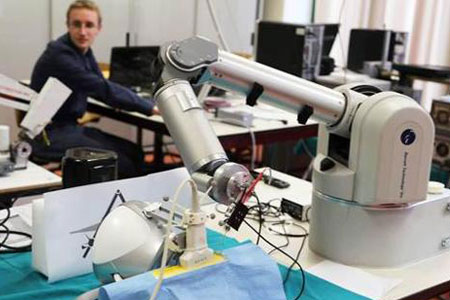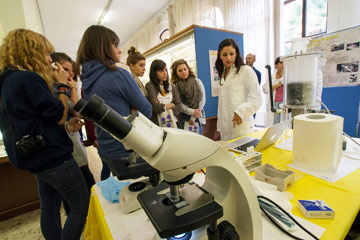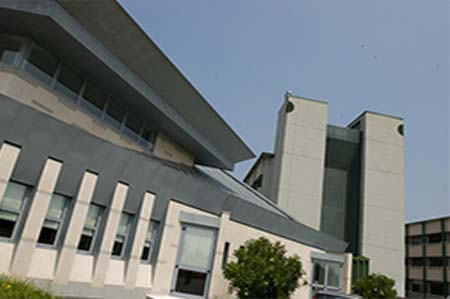Research interests
| Topic |
People |
Description |
| Active learning |
Cigdem Beyan
Manuele Bicego
Ferdinando Cicalese
Rosalba Giugno
|
In active learning, the model iteratively queries an oracle (typically a human annotator) to label only the most informative data points that would contribute most to improving the model's accuracy. By doing so, active learning reduces the labeling cost and accelerates the model's learning process. This approach is particularly useful when labeled data is scarce or expensive to obtain. The research focuses on developing effective selection criteria to identify the most informative data points for labeling, thereby improving the efficiency of the active learning process. |
| Domain adaptation/generalization |
Cigdem Beyan
Vittorio Murino
|
Refers to techniques in machine learning that aim to improve the performance of models when applied to new, unseen domains or environments. Domain adaptation focuses on transferring knowledge learned from a source domain (with abundant labeled data) to a target domain (with limited or no labeled data), overcoming the distributional differences between the two. On the other hand, domain generalization aims to develop models that can generalize across multiple domains, making them robust to variations without needing to retrain them on each specific domain. These approaches are particularly important in real-world applications, where models must perform reliably across diverse and changing datasets. |
| Multi-modal Learning |
Cigdem Beyan
Vittorio Murino
|
Aims to integrate and analyze data from multiple sources or modalities, such as images, text, audio, and video, to improve the performance and understanding of machine learning models. By combining information from different types of data, multi-modal learning enables systems to better capture the richness and complexity of real-world information. This field includes challenges such as modality translation, alignment, fusion, effective representation, and more. This area also includes multimodal/visual language models such as CLIP, which connects text and images, DALL-E, which generates images from text, BLIP, designed for image captioning and visual question answering, and large language models like GPT-4 and LLaMA, which extend to multimodal functions for tasks like text-to-image generation. |
| Multi-task learning |
Cigdem Beyan
Vittorio Murino
|
A paradigm where a model is trained to solve multiple related tasks simultaneously, sharing knowledge and representations across tasks to improve overall performance. Instead of training separate models for each task, multi-task learning leverages shared features and parameters, allowing the model to learn generalized representations that benefit all tasks involved. Research in this field focuses on improving task prioritization, balancing task importance, designing more efficient architectures, and dealing with negative transfer—where learning one task harms the performance of others. Additionally, the exploration of methods for task weighting, shared and task-specific layers, and transfer learning techniques are actively being investigated to enhance the versatility and scalability of multi-task models. |
| Unsupervised learning |
Cigdem Beyan
Manuele Bicego
Alberto Castellini
Ferdinando Cicalese
Alessandro Farinelli
Rosalba Giugno
Vittorio Murino
|
Is an approach where models are trained on unlabeled data, with the goal of identifying hidden patterns or structures within the data without predefined labels. It is commonly used for tasks like clustering, dimensionality reduction, and anomaly detection. Open research in unsupervised learning focuses on improving the ability to discover meaningful structures in complex, high-dimensional datasets, often with limited prior knowledge. Key challenges include developing more effective clustering algorithms, improving the interpretability of models that uncover latent structures, and handling high levels of noise or sparsity in data. Additionally, there is ongoing work to bridge the gap between unsupervised learning and other paradigms, such as semi-supervised, self-supervised or contrastive learning, and to enhance the robustness of unsupervised models in real-world applications. |
| Reinforcement learning |
Alberto Castellini
Alessandro Farinelli
|
Reinforcement Learning (RL) is a learning paradigm where agents to learn how to take a sequence of decisions through interactions with their environment. RL trains a model by considering a reward signal that is associated with the actions performed in the environment (high reward for good actions and the opposite). The model aims at optimizing the expected accumulated reward over time. RL is very intersting for practical applications (e.g., robotics, recommender systems) because it requires minimal specifications from the user and it can adapt to unpredicatble changes in the enrvironment. Main challenges relates to devising safe policies for the agents, e.g., learning while avoiding catastrophic falures (safe reinforcement learning and offline reinforcement learning), to properly evaluate the quality of a trained system, e.g., how can we guarantee that the agent will behave properly in unseen situations, and to improve sample efficiency, e.g., model-based reinforcement learning. |
| Semi-supervised learning |
Cigdem Beyan
Vittorio Murino
|
Combines a small amount of labeled data with a large amount of unlabeled data during training. The goal is to leverage the abundant unlabeled data to improve the learning process, using the limited labeled data to guide the model’s understanding of the task. This approach is particularly useful in scenarios where labeling data is expensive or time-consuming, but there is a large pool of unlabeled data available. |
| Supervised learning |
Cigdem Beyan
Manuele Bicego
Alberto Castellini
Ferdinando Cicalese
Alessandro Farinelli
Rosalba Giugno
Vittorio Murino
|
Is an approach where models are trained on labeled data to learn a mapping from inputs to outputs, enabling them to predict correct labels for new, unseen data. While widely used for tasks like classification, regression, and time series forecasting, open research in this field addresses several challenges. Key questions include how to make models more robust to label noise and inconsistencies, improve sample efficiency to reduce the need for large labeled datasets, and enable effective transfer learning across different tasks and domains with limited labeled data. Additionally, addressing issues of fairness and bias in supervised models, as well as improving scalability to handle large datasets without compromising performance, and attention/transformer-based approaches remain active areas of exploration. |
| Deep learning |
Cigdem Beyan
Alberto Castellini
Alessandro Farinelli
Rosalba Giugno
Vittorio Murino
|
Focuses on training neural networks with multiple layers to automatically learn patterns and representations from large amounts of data. Using architectures such as convolutional neural networks (CNNs) for images, recurrent neural networks (RNNs) for sequential data, and transformers for diverse tasks, deep learning excels at complex tasks like image recognition, natural language processing, speech recognition, reinforcement learning, time series analysis, and autonomous driving. |
| Explainable artificial intelligence |
Alberto Castellini
Alessandro Farinelli
Daniele Meli
|
The goal of explainable AI (XAI) is to i) explain black-box models; ii) develop AI models which are interpretable by construction. For instance, this involves causal analysis and discovery, logical models of agency (with logic programming) and logical machine learning (with inductive logic programming). XAI helps characterize model accuracy, fairness, transparency and outcomes in AI-powered decision making; moreover this field focuses on methods for improving model and decision interpretation using statistical and graphical tools. |







